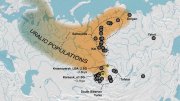To find an era of upheaval in the nature of work comparable to the scale and impact of that underway now, professor of management practice Joe Fuller looks all the way back to the beginning of the Industrial Revolution. “What did [industrialization] require? People leaving the land, interacting with new technology in a completely alien setting: hierarchical, non-familiar, non-seasonal,” he says. The advent of generative artificial intelligence, he continues, will similarly replace old ways of working with systems utterly foreign to today’s workers.
But this time, Fuller believes society can do a better job of getting workers ready. In a new white paper, “Unlocking Economic Prosperity: Career Navigation in a Time of Rapid Change,” Fuller and other researchers from the Project on Workforce at Harvard (see previous coverage on the “skills gap” here) and the National Fund for Workforce Solutions outline the challenges facing workers in today’s economy—and the ways that employers, educators, policymakers, and philanthropies can support them by making pathways to higher-earning jobs more transparent and accessible.
The paper, the most recent in a series from the Project on Workforce, continues its focus on improving opportunities for low-wage earners, many of whom are stuck in the “low-wage trap,” cycling in and out of low-paying positions with no clear paths to advancement. These workers, who make up 44 percent of the American workforce, according to a report by the Brookings Institute, are disproportionately women and people of color—an “occupational segregation” that stems from centuries of biases and policy decisions.
How can people stuck in the low-wage trap access upward mobility and higher-paying jobs? As automation and artificial intelligence eliminate middle-wage jobs, how can workers avoid being pushed into lower-paying positions? To address these questions, the authors of the paper dissect the field of “career navigation”—a term that refers to “how people move and progress throughout their careers,” says Kerry McKittrick, co-director of the Project on Workforce and a co-lead author of the paper. Fuller likens career navigation to navigating a car: low-wage earners are a population “that’s constantly getting lost, and we don’t know why,” he says. “Can we develop something like a Waze or a Google Maps that can help people make better-informed decisions and understand the consequences of the choices that they make?”
The paper identifies five drivers of career navigation success, beginning with information accuracy and access. In the current career ecosystem, Fuller explains, the information available to workers is often inaccurate, incomplete, or opaque.
He points to the inefficiency of job application processes: many applications are only fully accessible on computer browsers, while many applicants can only access the Internet through mobile phones. Disconnects like these hurt both job seekers and companies that are missing out on a full talent pool.
Other drivers of successful career navigation are skills and credentials. McKittrick notes that “the half-life of skills is shortening,” as automation and artificial intelligence learn to take on tasks from factory work to coding. As a result, job-specific skills may not be important as what the authors of the paper call “foundational skills” (known popularly as soft skills), which include qualities such as communication and teamwork. Social capital is a third important driver identified by the paper: social connections can provide direct access to hiring managers, and employed contacts or family members can provide advice and shape an individual’s career goals.
It’s one thing to identify the importance of information access, skill development, and social capital—and another to build the infrastructure to make these resources available to low-wage workers. In the current career system, these resources are usually passed down informally, in settings that skew white and wealthy. “You learn foundational skills at the dinner table, at your house of worship, on the youth sports team, in the classroom,” Fuller says. Meanwhile, advice about networking and writing cover letters is passed down by family members or upperclassmen, concentrating resources and knowledge among the already privileged.
To solve this problem, the researchers recommend formalizing the processes by which individuals obtain information, skills, and social capital. The two remaining drivers of career navigation identified in the paper could help: providing wraparound supports and resources, such as childcare and formal career coaching; and altering social structures and ecosystems, such as unequal economic conditions and discriminatory biases, through public and private sector policies.
And although artificial intelligence may eliminate many current jobs, Fuller says the technology can also help to solve the problem it’s creating. He points out that the United States lacks a “taxonomy” of skills. In other countries, such as Germany and Denmark, there is a standard vocabulary to describe the qualities required for different jobs. But in the United States, job postings might use synonyms to describe what are actually the same positions and skills, making it harder for applicants to search for relevant work. Artificial intelligence could help to scrape and analyze job listings, tailoring recommendations and presenting information to applicants more efficiently.
One continuing challenge will be encouraging different stakeholders—including educators, employers, policymakers, and philanthropies—to work together to build the infrastructure for an effective career navigation system. “The incentives for educators, state and local government, the federal government, and employers are all different,” Fuller explains. But as a start, he hopes that emphasizing that each group doeshave an incentive to create a career navigation system will encourage them to make changes: employers, for example, should know that improving employment practices helps not only applicants, but also employers themselves, who get a larger and more talented pool of candidates to pick from.
McKittrick hopes that philanthropy can also play a role as a “research and development catalyst,” helping to build an information base that can facilitate future collaboration between stakeholders. “Career navigation as a concept hasn’t been very explored in the research and in the field,” she says. But by studying the career journeys of low-wage earners, she continues, researchers have been able to analyze the factors that drive both career stagnation and success. “By understanding that, we can apply solutions and recommendations for stakeholders to build a more comprehensive ecosystem that allows folks to progress,” she says, “even at a time when pathways are opaque and the labor market is changing rapidly.”









